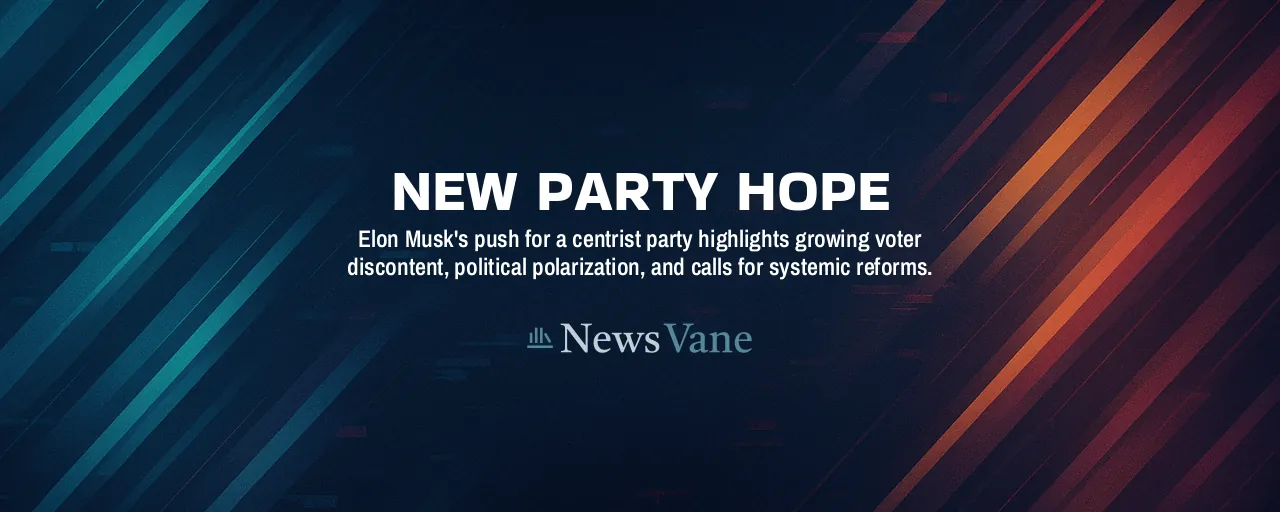A Cry for Change
Elon Musk's call for a new political party to represent the '80% in the middle' landed like a spark in a dry field. It captured a frustration many Americans feel, the sense that politics has become a shouting match between extremes, leaving most people's concerns unheard. The idea resonates because it feels like the system is stuck.
Voter discontent continues to grow. Surveys show 63% of Americans dislike the current political setup, and 28% have little faith in either major party. With trust in government scraping historic lows, the notion of a fresh start holds appeal.
What would such a party stand for? Could it even break through in a country where two parties have held power for nearly 200 years? These questions drive a larger debate about the future of American democracy.
The middle, as Musk sees it, represents millions of voters who want practical answers on issues like jobs, health care, and education, but feel ignored by partisan battles. This is a powerful bloc. Tapping into that energy is the challenge, and the opportunity.
Why the Center Feels Left Behind
Polarization has redrawn America's political map. Back in 1992, 43% of voters called themselves moderates; by 2024, only 34% did. Meanwhile, 77% of Republicans identify as conservative, and 55% of Democrats lean liberal. This drift has sidelined those who don't fit neatly into either camp.
People in the center often crave solutions over ideology. They're fed up with gridlock on critical issues like infrastructure or climate policy. Polls indicate 63% of Americans want more than two major parties, signaling a demand for options that reflect their pragmatic streak.
This group is diverse, spanning suburban families worried about schools, small-business owners navigating taxes, and young voters tired of partisan noise. A new party would need to speak to all of them while avoiding empty rhetoric.
The Steep Climb for New Parties
History offers a tough lesson for third parties. The Republican Party's rise in 1854, built on the anti-slavery cause, was a rare success. Later attempts, like Ross Perot's 19% vote share in 1992 or Theodore Roosevelt's 1912 Progressive run, gained attention but faded fast.
Modern third parties face a gauntlet: state laws demanding thousands of signatures for ballot access, exclusion from debates without 15% in polls, and winner-take-all rules that reward the biggest players. In 2024, Libertarian and Green candidates barely cracked 1% of the vote.
Funding is another hurdle. Creating a national party requires vast resources and local networks, something past centrist groups like No Labels couldn't sustain. Even with voter anger at its peak, turning frustration into a viable party is a long shot.
Can the Center Hold?
Global examples offer hope for centrism. France's La République En Marche blended progressive and pro-market policies to win power. Germany's multi-party coalitions have brought stability, and Nordic nations balance welfare with growth. These systems, though, use proportional voting. America, by contrast, employs a winner-take-all approach.
In the U.S., some propose focusing on suburban swing districts or adopting ranked-choice voting, which is taking root in Maine and Alaska. Securing a handful of House seats could give a new party influence in a divided Congress.
Yet doubts persist. Supporters of conservative priorities, like limited government, or progressive goals, like health care reform, argue that a centrist party might dilute their votes and empower opponents. They prefer fixing their own parties over betting on a new one.
The Roots of Frustration
The push for a new party stems from a deeper loss of trust. Since the 1970s, scandals like Watergate, economic crises, and polarized elections have eroded faith in institutions. Only 4% of Americans believe the political system functions well, and 36% skipped voting in 2024.
Younger voters, despite strong turnout in 2020, often feel change is out of reach. They point to issues like campaign finance or partisan media as barriers to progress. This mix of hope and cynicism opens the door to new ideas, but also risks disengagement if nothing shifts.
Polarization fuels the problem. Mutual distrust between party supporters has doubled since the 1990s, stalling legislation and sparking occasional violence. A centrist party would need to cut through this tension while proving it can deliver.
What Comes Next
Musk's idea reflects a real desire for a politics that listens to the center. It's a call for a system that prioritizes results over endless debates. But the road to a new party is littered with obstacles, from history to hard math.
Success demands a clear platform, grassroots energy, and reforms like ranked-choice voting to level the playing field, going beyond mere frustration. Global models show centrism can thrive, but America's system calls for a unique strategy.
This debate, stirred by voices like Musk's, underscores that democracy grows through challenge and vision. Whether a new party rises or the major ones evolve, the demand for a politics that speaks to the middle will keep pressing forward.
